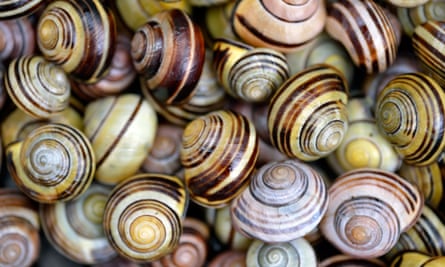Several years ago I read Patrick Barkham’s The Butterfly Isles in which he describes seeking out all 59 species of the most colourful, visible and well-documented insects in the UK. This is not unique: I met two people during a single day on a nature reserve this July who had achieved the same thing.
Barkham’s book was not about achieving something new; not simply a race to a determined finish line. It was a journey that sought to share the author’s personal passion with a wider audience and, in a time of global biodiversity decline, more champions for nature can only be a positive thing.
I love butterflies, but I believe that our snails deserve more attention.
From an aesthetic standpoint the common brown-lipped snail, which exhibits an exquisite range of shell colours and patterns, easily surpasses the immutable and sombre tones of one of our most common butterflies, the meadow brown. Trochoidea elegans (which possesses the understated common name of ‘top snail’) is surely just as impressive – with its elegant, conical shell – as a small skipper. Acanthinula aculeata, its shell festooned with serrations (named, with little imagination, the prickly snail), clearly has a more punky and aggressive style than any UK butterfly. Our snails have true charisma.

With butterflies, the mountain ringlet is often touted as the species most threatened by climate change. As global temperatures rise, its only recourse is to breed at higher altitudes – and thus in cooler locations. Eventually, though, it will run out of mountain to climb. The mountain ringlet is undoubtedly threatened, but with populations present in the English Lake District and Scotland, it seems in less of a precarious position than the snail vertigo modesta. Vertigo modesta – the cross whorl snail – is found in only two places in the UK. Both of these are on high mountain summits in north-east Scotland and any change in vegetation cover, which could easily be brought about by climate change, might spell doom for the species in Britain.
Many of our snails have as exacting and vulnerable habitat requirements as our butterflies, but with nowhere near the same level of awareness.
With this in mind, I have set myself a quest. Over the course of 2015 I will be trying to see every single species of land snail in the UK. There are around 120 species scattered across the UK, from the Isles of Scilly to the Highlands of Scotland, including hothouse aliens that are found only in botanic gardens and greenhouses, such as Kaliella barrackporensis in Cornwall’s Eden project. They range in size from the tiny Punctum pygmaeum at 1mm wide, up to the golf-ball sized Helix pomatia, originally introduced to the UK by the Romans. By doing this I hope to highlight the particular beauty of snails, and share their fascinating life stories and the threats they face –and meet the people dedicated to life in the slow lane.

Comments (…)
Sign in or create your Guardian account to join the discussion